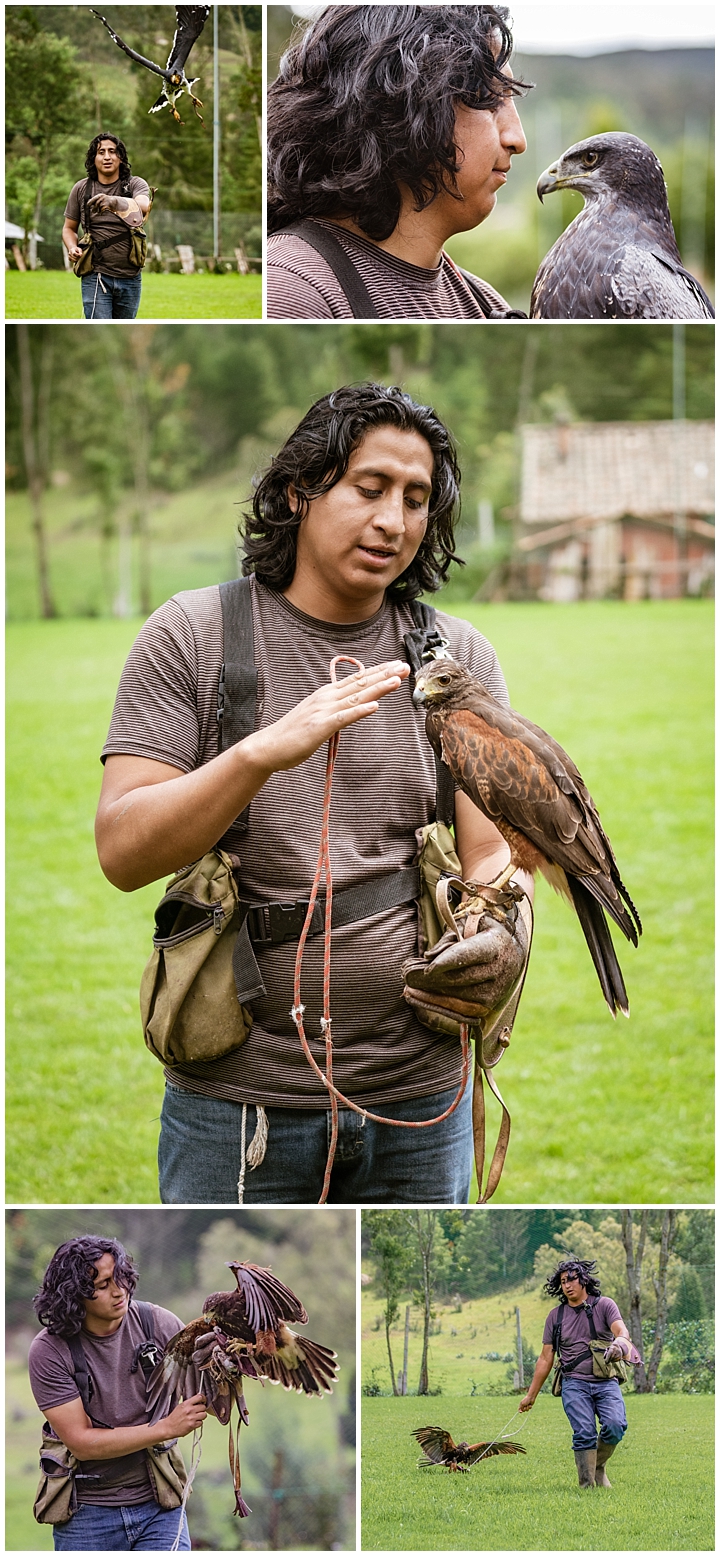
Soledad Riquetti de Gould (aka Sole), owner of La Yunta restaurant arranges trips for expats weekly, usually for cooking classes. Yesterday, she arranged a special trip to Cetreria (the Falconry Center) and the Yurak Allpa Zoológico Refugio in Tarqui, which were featured recently in an article on CuencaHighLife. We were so intrigued with the article that we registered for the tour as soon as it came up, and became part of a group of 16.
The highlight of the trip was our visit to the new Cetreria, where we witnessed a remarkable relationship between bird and man. Jose Pachéco, one of the bird handlers (seen above), has worked for the center for 6 years as a volunteer. Jose is also training to be a veterinarian, with a focus on birds. With his gentleness and daily interaction with each bird, Sole says she has seen remarkable personality changes with the wild raptors he cares for. Jose can be easily be considered the region’s Bird Whisperer.
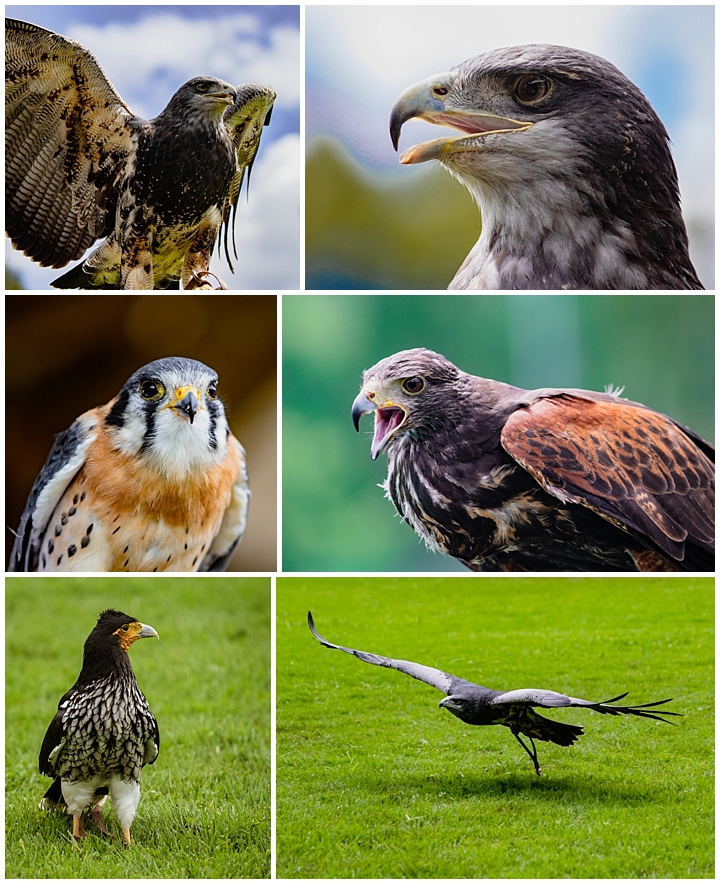
Guests and school children are able to interact with three birds of prey (named Ana, Lucy and Oliver) that have been rescued after being injured. Where possible, these birds are brought back to health, and then reintroduced back into the wild.
This was initially part of the Yurak Allpa Animal Rescue center (see more at the end of this post). Realizing the birds needed more open space for flying, Alberto Vele was finally able to obtain the current land just down the road a short distance, and opened the falconry center in February of this year.
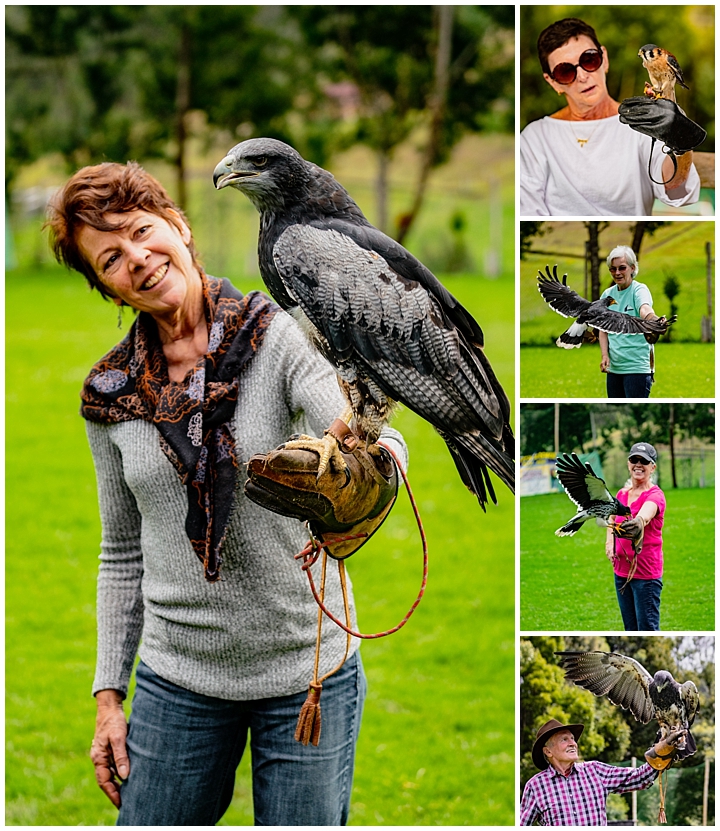
Everyone had an opportunity to have the birds fly to their outstretched arm with a protective glove holding some food, to get selfies taken with the birds. We were taught to hide the glove, until Jose yelled “ven” (the Spanish word for “come”), then hold out your arm as the bird swooped in for the treat you held.
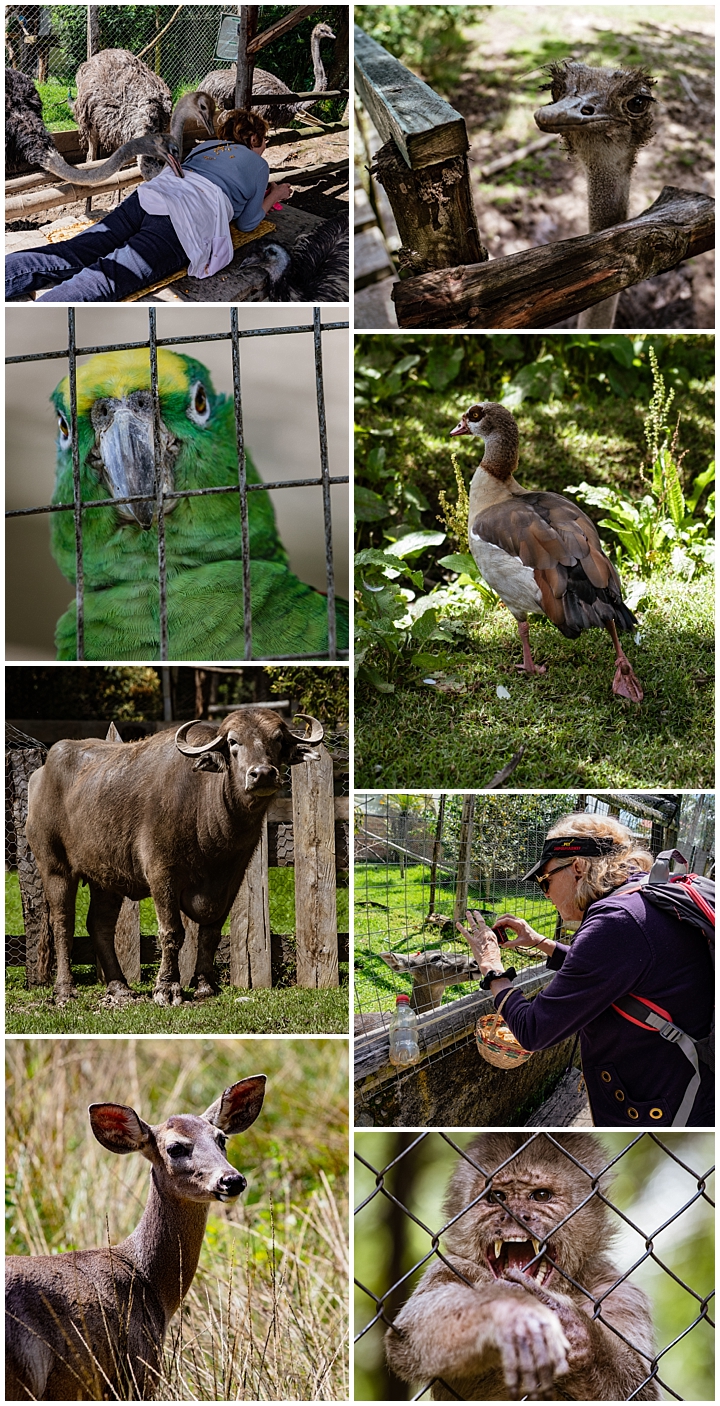
We also visited the Yurak Allpa Zoológico Refugio, shown above. It is often referred to as the “Tarqui Zoo,” but has a serious purpose of rescuing animals that were injured in the wild, or often mistreated as pets. Most of the animals are in closed off areas, with monkeys being behind wire fences to keep them from escaping. The teeth on the white-fronted capuchin (lower-right) made sure that when we fed them sugar cane, it was at a distance and only from our hand to theirs. Sometimes we threw the food at them, as they were masterful at playing catch. The monkeys would lift their heads up high, and let the cane juice drip into their mouths. One monkey even pounded his cane to tenderize the hard parts before chewing it. Once finished, the monkeys sometimes threw back the spent cane at the guests, telling us they were ready for another piece.
There were several emus, and Alberto trained them to work. Several members of our group lay down on a wooden bench and had corn kernels spread across their backs (upper-left). The emus ate up the kernels quickly, resulting in a shiatsu-style back massage.
This has become quite a wonderful education center for the kids in the region, where they can see and feed domestic animals such as horses and cuy, plus feed wild animals including parrots, deer, ostriches, emus, monkeys, and raptors.
After visiting both these rescue centers, we had a delicious lunch at La Yunta restaurant. Though they are a 30 minute drive outside of Cuenca, it is a restaurant we have visited many times before. As usual, the food was scrumptious.
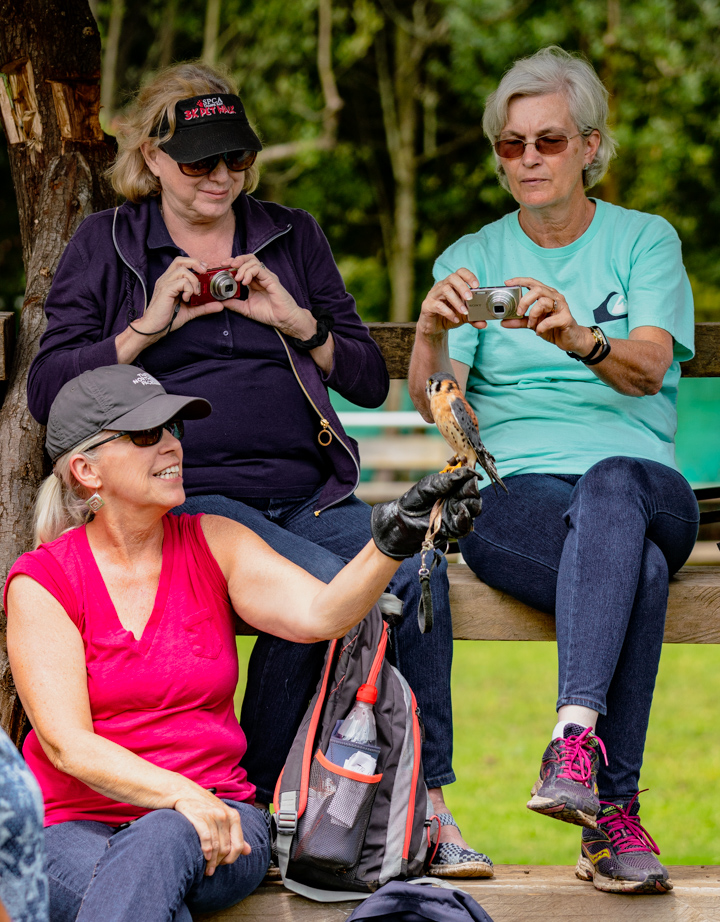
An American kestrel became a favorite target for bird portraits!